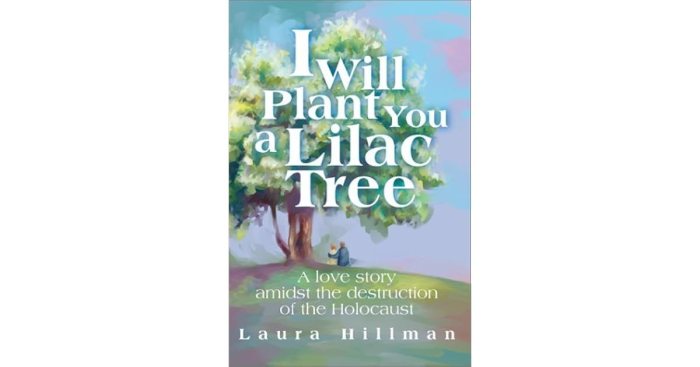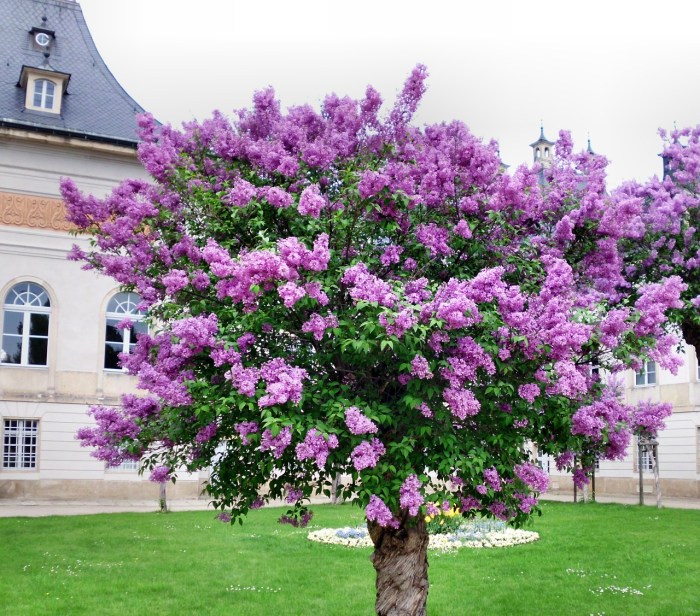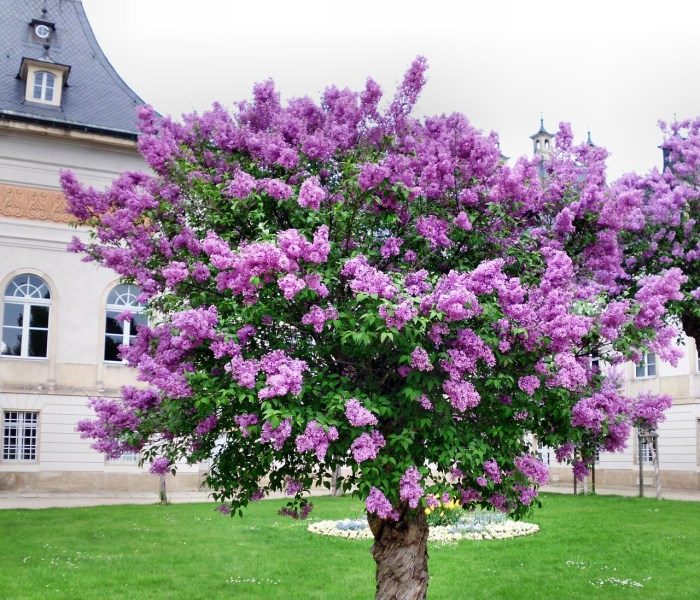I Will Plant You a Lilac Tree A Metaphor for Life
Figurative Interpretation

The phrase “I will plant you a lilac tree” transcends its literal meaning, blossoming into a rich tapestry of symbolic interpretations centered around nurturing, growth, and the enduring nature of love and memory. The lilac itself, with its vibrant hues and intoxicating fragrance, holds deep cultural significance across various societies, often representing themes of new beginnings, remembrance, and the delicate balance between life and death.
Analyzing the phrase through this lens reveals a profound metaphor for the complexities of human relationships.Lilacs’ symbolic weight varies across cultures. In Victorian language of flowers, lilacs signified first love, youthful innocence, and the sweet memories of a cherished past. Their vibrant purple hues, in some interpretations, symbolize royalty and dignity, while their delicate blossoms represent the ephemeral nature of beauty and the transience of life.
I will plant you a lilac tree, its fragrant blossoms a promise whispered on the wind. The same careful nurturing applies to other fruit trees, and learning the specifics, like those detailed in this guide on how to plant a apricot tree , will help ensure a bountiful harvest. Then, returning to my promise, I’ll plant your lilac tree, a testament to enduring beauty.
In other cultures, lilacs are associated with spiritual awakening and the promise of renewal. This multifaceted symbolism enriches the meaning of the phrase, suggesting a multifaceted relationship, one that encompasses the joys of new beginnings, the bittersweetness of remembrance, and the enduring strength of love amidst life’s inevitable changes.
Lilacs as a Metaphor for Nurturing and Growth in Relationships
The act of planting a tree, particularly one as beautiful and fragrant as a lilac, symbolizes nurturing and tending to something precious. The phrase “I will plant you a lilac tree” thus becomes a powerful metaphor for the commitment to fostering growth and well-being within a relationship. It speaks to the dedication involved in cultivating a bond, providing the necessary support and care for it to flourish.
The lilac tree, with its slow but steady growth, mirrors the gradual development and deepening of a strong relationship over time, highlighting the importance of patience, understanding, and consistent effort. The eventual blossoming of the lilac represents the culmination of this nurturing process, symbolizing the beautiful and fulfilling outcome of a committed relationship.
A Narrative Exploring Love and Loss
The old woman sat on the weathered porch swing, the scent of lilacs thick in the air. Each delicate bloom was a memory, a whisper of a love lost too soon. He had promised, “I will plant you a lilac tree,” his words echoing in the quiet of her heart. He planted it the spring they met, a young sapling, fragile and hopeful.
It grew alongside their love, a silent witness to their laughter and tears. Now, the lilac tree stood tall, a testament to a love that transcended time, its purple blossoms a poignant reminder of a promise kept, even in the face of loss. The fragrance of the lilacs, once a symbol of their vibrant love, now served as a bittersweet solace, a fragrant link to a cherished past.
Visual Representation of the Phrase, I will plant you a lilac tree
Envision a delicate lilac blossom, its petals unfurling like a promise whispered on the breeze. The pale lavender hues deepen to a rich purple at the heart, mirroring the complexities of love’s journey. Sunlight filters through the leaves, casting dappled shadows on the earth below, where the roots of the lilac tree, unseen yet strong, anchor it firmly to the ground.
The scene is imbued with a quiet sense of peace, a subtle melancholy interwoven with the beauty of enduring love and the acceptance of life’s natural cycles. The air is filled with the sweet, almost intoxicating scent of lilacs, a tangible reminder of the promise made, the love planted, and the enduring legacy of a cherished relationship.
Literary and Artistic Applications: I Will Plant You A Lilac Tree

The image of planting a lilac tree, while seemingly simple, holds potent symbolic weight readily adaptable across various artistic mediums. Its recurring presence in literature and art reflects a deeper engagement with themes of memory, growth, resilience, and the cyclical nature of life and death. The act of planting itself suggests intentionality, nurturing, and the anticipation of future beauty.
The lilac, with its vibrant blooms and evocative fragrance, further amplifies these themes.The phrase “I will plant you a lilac tree” can function as a powerful metaphor, conveying promises of enduring affection, remembrance, or a commitment to fostering something beautiful and lasting. Its versatility allows for diverse interpretations depending on the context.
Lilac Tree Imagery in Literature and Art
The lilac’s symbolic significance varies across cultures and time periods. In some contexts, it represents innocence and first love, while in others, it can symbolize remembrance and the transience of life. For instance, the recurring motif of lilacs in the works of Emily Dickinson often speaks to the fleeting nature of beauty and the inevitability of death. In contrast, the lilac in a pastoral painting might represent the simple joys of rural life and the beauty of the natural world.
Consider the famous painting, “Lilacs” by Claude Monet. His impressionistic style captures the vibrant hues and delicate texture of the lilac blossoms, evoking a sense of springtime renewal and the ephemeral beauty of nature. The viewer is invited to contemplate the fleeting nature of beauty as captured in the soft brushstrokes and vibrant colors. This contrasts with a more symbolic use, perhaps in a gothic novel where a lilac bush might grow over a forgotten grave, symbolizing enduring memory despite the passage of time.
Literary Genre Applications
In poetry, “I will plant you a lilac tree” could serve as a central metaphor in a narrative poem about loss and remembrance. The act of planting becomes a ritual of mourning, and the lilac’s eventual blossoming symbolizes the enduring power of love and memory. In prose, the phrase could be used in a novel to express a character’s unspoken commitment to another, a silent promise of enduring support and affection.
The lilac tree becomes a physical manifestation of their bond. In drama, the phrase might be uttered as a poignant vow between characters, foreshadowing either a lasting relationship or a tragic end, depending on the play’s overall tone. The lilac tree could even be a central stage prop, symbolically representing the changing fortunes of the characters.
Comparative Symbolism Across Literary Works
The lilac tree’s symbolic weight varies greatly depending on the work. In some romantic literature, the lilac might represent the blossoming of love and youthful passion. In contrast, in works dealing with mortality, the lilac could symbolize the cyclical nature of life, the beauty that arises even from decay. Comparing the use of the lilac in, for example, a Victorian-era novel emphasizing domesticity with its use in a modern-day work exploring themes of environmentalism reveals shifts in societal values and perspectives.
The enduring appeal of the image, however, lies in its capacity to evoke a range of emotions and interpretations.
Song Lyric and Visual Art Incorporation
A song lyric could incorporate the phrase “I will plant you a lilac tree” as a recurring motif, building upon the imagery of growth and enduring love or loss. The melody and instrumentation could reflect the emotional arc of the song, perhaps starting with a melancholic tone and gradually building to a hopeful crescendo as the lilac blossoms. A visual artwork might depict a solitary figure planting a young lilac sapling, set against a backdrop of a desolate landscape.
The stark contrast between the fragile sapling and the barren surroundings would emphasize the resilience of hope and the promise of future beauty, mirroring the potential for renewal and growth inherent in the phrase. The artist could use color and light to enhance the symbolic meaning, using soft pastels for the lilac and a deeper, richer tone for the earth, conveying a sense of nurturing and growth.
FAQs
What types of soil are best for planting lilac trees?
Lilacs thrive in well-drained, slightly acidic soil. Avoid heavy clay soils.
How often should I water a newly planted lilac tree?
Water deeply and regularly, especially during dry spells, until established (about a year).
When is the best time to plant a lilac tree?
Fall or early spring, before new growth begins.
Do lilac trees need pruning?
Light pruning after flowering helps maintain shape and encourage blooms.
Why aren’t my lilac trees blooming?
Several factors can affect blooming, including insufficient sunlight, poor soil, or incorrect pruning.

